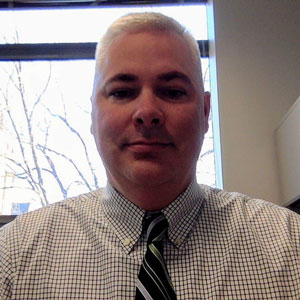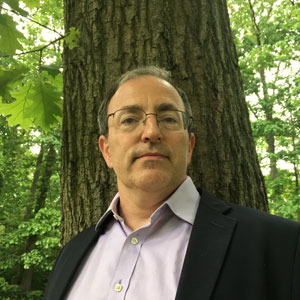What a Fall Reopening Looks Like
New Jersey Institute of Technology started the process of planning its return to campus with a strength — the concept of converged learning — and began building from there.
- By Dian Schaffhauser
- 06/03/20
While New Jersey Institute of Technology (NJIT) hopes to reopen in the fall, it's being aggressive in its planning to prepare for "all possibilities." That's pretty much how the university's "pandemic recovery plan" — a work in progress — opens. Flexibility is the prime mover. And that's a muscle that NJIT has been flexing since 2013 when it introduced a concept it calls "converged learning." But first came the agility.
"We Had to Be Very Nimble"
The institution, classified as an R1, has about 11,400 students, some 3,000 who usually live on campus. There's a high proportion of first-generation or low-income students. When cases of coronavirus began surfacing in New York City, the university took notice. NJIT sits in Newark, a 15-minute car ride from Manhattan. According to Johns Hopkins University tracking, Essex County, where Newark is located, has suffered 1,667 COVID-19-related deaths as of June 1, 2020, with 17,733 confirmed cases.
By Feb. 3, the school had set up an emergency "rapid response" task force with representatives from across campus to monitor updates from the New Jersey Department of Health and the Centers for Disease Control and guide response. By March 10 the campus had announced that it would shift to virtual classes after spring recess; those would begin on March 23.

Matthew Golden
"We had to be very nimble," said Matthew Golden, chief strategy officer for strategic initiatives and a member of that task force. "We had to be willing to change plans quickly and make adjustments." Even as the university made the transition to an almost completely remote learning environment, which meant getting devices and webcams out to students who didn't already have equipment, it was also addressing the needs of students who were stuck on campus — either because they were international and couldn't go home or because they "didn't have a place to go." Those students needed housing, meals and other services.
However, in the time warp that is virus time, that seems like ages ago. Now the university has to look forward, to the fall. Yes, there will be washable face masks — two per person — and hand-sanitizing stations.
But there's also the flexibility that has to come into play. While the emergency task force has moved into the background, a newly convened "recovery steering committee" has emerged to take up the load.

Perry Deess
Conversations in the Provost's Office eventually came around to the realization that NJIT needed to start work on its recovery planning. E. Perry Deess, NJIT's director of the Office of Planning and Accreditation, is part of the new steering committee, charged with developing the recovery plan, which really means roping together the thinking of leaders in every operation, academic office and unit on campus.
And as far as Deess was concerned, converged learning had found its moment. "Over the past seven years we've been in a process of very slowly equipping all of our classrooms with cameras and microphones so that virtual and face-to-face classes [can meet] at the same time," he said. "Some students come in by internet, and the others are in the classroom. And they both have the same synchronous experience. We try to make it seamless between the students who are attending remotely and the students who are attending in person. What we realized was, oh, this is something which addresses our need for flexible instruction in response to the pandemic."
Now NJIT is equipping an additional 10 or 15 rooms with fixed converged learning setups and purchasing carts for about 90 others that won't have the permanent gear. The goal: for every classroom to have capacity to serve equally well for face-to-face and remote learning instruction.
The reason for the carts, he said, was that they're both cheaper than the installed system and they can be "secured at the end of the day."
A New Definition for "Flex" Seating
The university has mapped out every classroom and event space on campus to sort out the "social distancing" aspects of convening classes. To assure that when classes convene it's done so safely, NJIT is considering a color-coded system. Students for the first class of the day would sit in the blue chairs. Then the next class of students would take the red chairs. Then, before a third seating, there'd be cleaning done, and two more classes could convene safely, red after blue.
However, those kinds of details are "dependent on federal and state requirements," Deess emphasized. "Just in the past few days, [the CDC has] talked about reduced danger of infection from surfaces that are regularly contacted. It may be that we end up not using the red-blue seat method. But that's the flexibility. If the CDC requirements don't call for that level of sanitation, then we don't have to do it. But the plan is there if we need it."
Of course, a STEM-oriented school like NJIT relies on students undertaking team projects that involve hands-on activities that can't be delivered remotely. Golden said he would expect the institution to continue delivering small group interactive work; it'll just look different. Students will probably have to wear personal protective equipment, for instance, and they'll have to come up with ways to accommodate the social distancing.
The mix of tech and pedagogy will no doubt be hit or miss, Deess suggested. "People will be developing that as the semester goes on," he said. "They will be identifying new ways to teach using technology, and that's a dynamic process. They'll try something that doesn't work; then they try something else."
Time and Space
One of the biggest challenges is being tackled by the registrar's office, Golden and Deess acknowledged, and that's the scheduling of classes. "It's not like students are moving en masse from one class to the next class. They have very divergent schedules," said Golden. "The model with the red and blue works pretty well for courses, but not at the schedule level. You can't aggregately schedule a student and say, 'OK, you're only on campus for red days, and you're only on campus for blue days,' because they are choosing courses that might be delivered on either day."
Plus, it's not just the setup, he added. There are also the time considerations. "It's how much time does it take to set up the space and to sanitize everything and to resanitize equipment that's been used by multiple people and break the space down and convert it into another space?"
For events, the planning incorporates reduced capacity, "obviously," said Golden, but also "reduction in flexibility." Each space will have a standardized setup without the normal level of customization that existed before. Other considerations include questions such as, what additional sanitation work will be required "if you're hosting an event in that location? And how do you administer the check-in process in a way that minimizes physical contact?" Right now, the thinking for that is a "four-page bulleted document of guidelines," he said. "And then there are documents of several hundred pages that lay out the space setups for each of the places where we host events."
"Maximum Degree of Flexibility"
But classrooms and events are only part of the recovery solution, Deess noted. The steering committee also has to accommodate students flexibly for advising, registration, counseling, financial aid and so on.
Each area vice president or senior leader is working with his or her team to develop a recovery plan that meets the phases of the White House's "Opening Up America Again" plan as well as the state's own guidelines, while allowing for various degrees of operations, both in person and remote.
"The key thing with our plan is that it offers the maximum degree of flexibility," explained Golden, who's handling the recovery planning for his group, which is communications. "We'll be able to hit the ground running at normal capacity if we're so able when classes start. Or if we need to have reduced capacity in the classrooms, we're able to provide that. And if, at some juncture during the fall, we need to move to a remote model, we have the flexibility to accomplish that."
The steering committee members aren't working in isolation. They're cross-reviewing each other's plans and learning from each other, Golden said. They're also analyzing plans to see how their own units could be affected. "For example, if my group can't deliver certain functionality at different stages, that's something that needs to be built around for admissions and recruitment and fundraising or alumni relations areas. And vice versa. I need to know what expectations they have for what services they're going to deliver or what strategic initiatives they're going to be working on during those phases, so that I can make sure we're operationally able to service their needs. And that's just one example. It exists across all departments, really."
The Final Ingredient: Innovation
One instruction from the provost that Deess admitted to "enjoying" in the whole planning process was this: to move the various departments toward innovative thought. "It's not just that we're trying to get through this time and put in place whatever we have to," he explained. "The actual instructions are, to the extent possible, to develop innovative solutions for this that may, in fact, be used in the future."
As an example, he pointed to advising. "Some of the changes there we expect will continue into the distant future even if the pandemic magically went utterly and completely away."
While not every department is taking the opportunity to think innovatively long-term, "every department is being encouraged to come up with the innovative solutions that would be appropriate for a more digital age," Deess said. "We've been treading on the edge of that for a long time and now we're there."